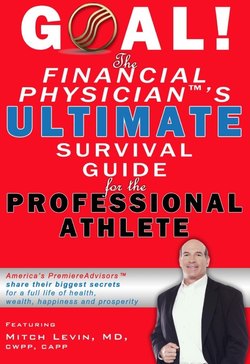Читать книгу GOAL! The Financial Physician's Ultimate Survival Guide for the Professional Athlete - Mitch Ph.D. Levin - Страница 8
Existing Laws Help Protect Your Assets
ОглавлениеHomestead Exemption. They say a man’s home is his castle, but is that really true? Most states provide some sort of creditor exemption for a personal residence. Each state has different rules and limits for what that exemption is, and you should check with your local advisor, or call one of the authors, to determine just how much the homestead exemption is in your state.
The homestead exemption came from public policy concerns to protect the family. The theory is fairly simple⎯the legislators wanted to protect some portion (in some states it is unlimited) of the family residence so families (even those riddled with debt and hounded by creditors) have a safe haven.
Interest protected. The homestead exemption is a statutory right to protect “homestead property.” This is typically the real estate owned by a person as his/her personal residence. Again, each state varies on their definition so be sure to check with your local advisor to make sure the piece of property you are concerned about is covered.
Homestead exemption value. The amount of homestead exemption in each state varies widely. States such as Rhode Island, Delaware, New Jersey, Pennsylvania, and the District of Columbia have no homestead exemptions. Texas and Florida, and a few others, have unlimited homestead exemptions; however have some limits under the new bankruptcy laws.
Some states have a different amount for married couples, some vary the amount by the number of dependent children an individual or couple has; some states raise the exemption if someone incurs significant hospital or medical debts, and some increase the exemption in the case of bankruptcy.
We would say a general number for states that do not have an unlimited exemption, and those that have no exemption, is between $5,000 and $50,000 (depending on if you are married or single).
Debt exclusions. Certain debts in all states are excluded from being covered by the homestead exemption. Almost all states exempt out consensual liens, mechanic liens, and property taxes from being covered by the homestead exemption. Many states are now adding to the list of exemptions debts for child support or spousal support. The IRS is also a creditor that does not fall under the homestead exemption. So, if you owe a significant amount of taxes you cannot pay to the IRS, they can take your home notwithstanding the state-allotted homestead exemption.
Practical example of how the homestead exemption would work if sued. Assume an athlete is sued for negligence and a jury verdict comes back for $1,000,000 over any insurance coverage the may be available. Further, assume that the athlete is single and has a home worth $1,000,000 with $500,000 in equity.
If the athlete lived in a state with an unlimited homestead exemption, the creditor, through the collection process, could not force a sale of the $1,000,000 home to satisfy the judgment.
If the athlete lived in a state with NO homestead exemption, the creditor, through the collection process, could potentially force a sale of the $1,000,000 home to satisfy the judgment.
If the athlete lived in a state with a $50,000 homestead exemption, the creditor, through the collection process, could potentially force a sale of the $1,000,000 home to satisfy the judgment. In this example, the creditor could receive all the proceeds from the sale of the house above $50,000. That first $50,000 is the exempted amount and stays with the athlete.
Having a homestead exemption in most states does very little good for a high-end client with the potential for million-dollar creditors. States with an unlimited exemption are the exception.
If you would like to know what the laws are with your state’s homestead exemption, please see a local attorney or feel free to give one of the authors a call. We would be happy to give you the specifics of your state.
